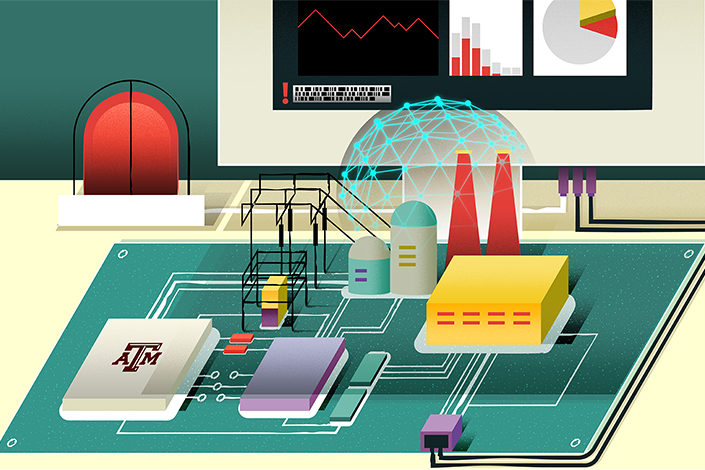TEES team is developing next phase of cyber security for US energy

With federal funding, a project team from the Texas A&M Engineering Experiment Station (TEES) intends to develop a next-generation secure energy management system that can detect malicious and abnormal events with a combination of cyber and physical data and algorithms, effective integrated analytics, and visualization.
Kate Davis, assistant professor in the Department of Electrical and Computer Engineering at Texas A&M University, leads the team, which includes project members from Pacific Northwest National Laboratory; Sandia National Laboratory; Sekurity; the University of Illinois, Urbana-Champaign; and Vistra Energy.
The nation’s energy infrastructure has become a major target of cyberattacks over the past decade, with more frequent and sophisticated attacks on the rise. Today, a cyber incident has the potential to disrupt energy services, damage highly specialized equipment, and threaten human health and safety. This makes energy cybersecurity a top national priority that will require the federal government and the energy sector to work together to reduce cyber risks that could trigger a large-scale or prolonged energy disruption.
To address this priority, the US Department of Energy recently announced awards of up to $28 million to support the research, development and demonstration of next-generation tools and technologies to improve the cybersecurity and resilience of the nation’s critical energy infrastructure, including the electric grid and oil and natural gas infrastructure.
The TEES team is among the 11 teams to receive one of the awards.
“The grant is about re-envisioning the next generation energy management system that considers the power system together with cyber communications,” Davis said. “The idea is to have a truly cyberphysical energy management system that provides visibility into the cyber side and analysis of the cyber side that is tightly coupled with the physical side.”
According to Davis, current energy management systems often are older technology that has been in place a long time, which makes them very hard to upgrade and make changes to because the focus is on the physical processes that can increase security risks.
Davis said the overall impact of a more secure energy management system would benefit everyone, from communications personnel to operators who can learn what types of risks they need to worry about, to education and outreach for everyone to make the different groups more aware of issues. She’s excited to be able to do her part.
“This is a project that’s the close to my
heart,” Davis said. “These problems are the things that keep me up all night so
I’m thrilled to have the opportunity to have this kind of impact.”

